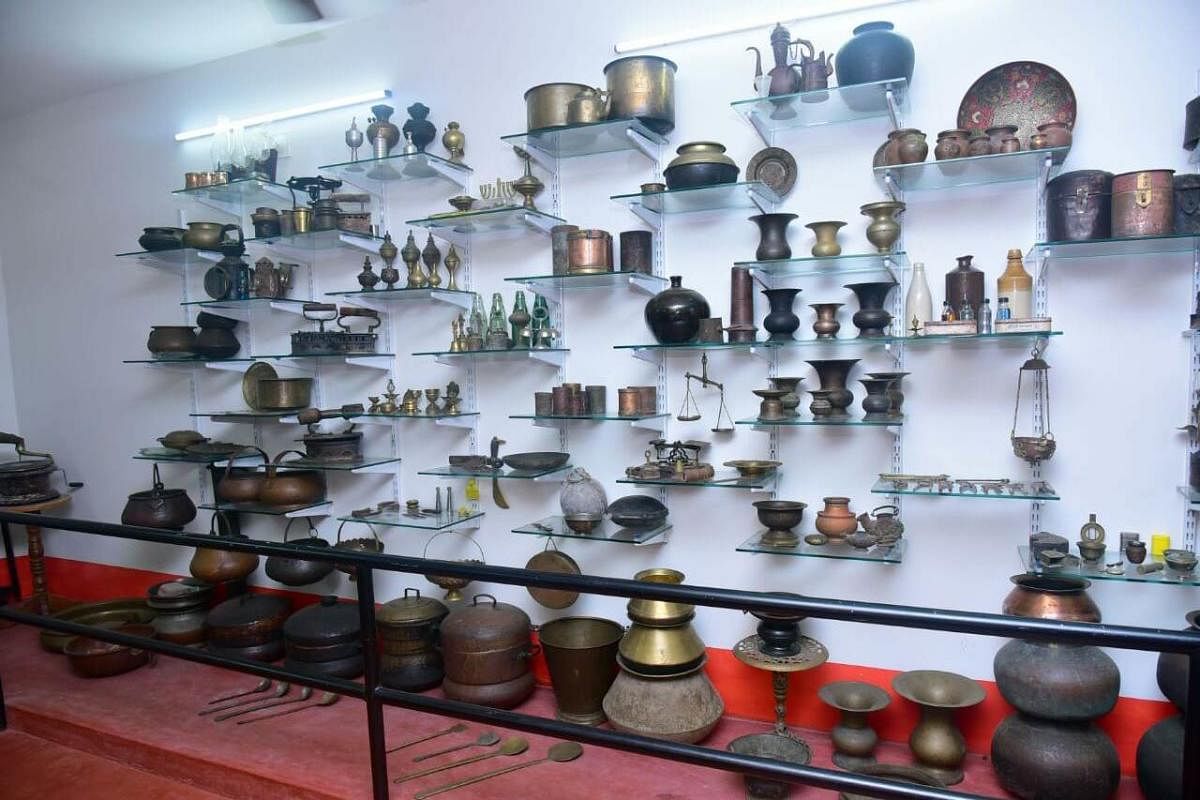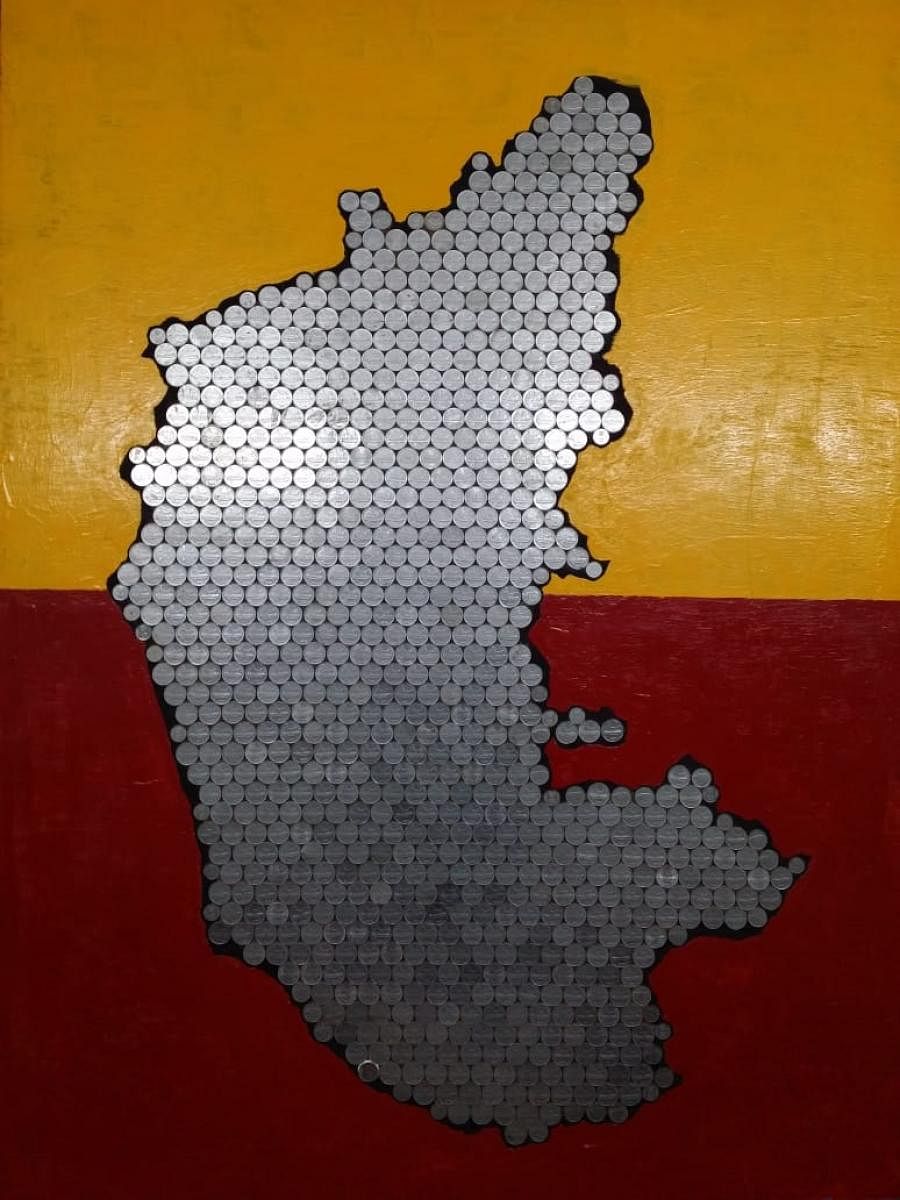

After his dream to become a kabaddi player was crushed by his ill-health, Yasar Kalladka turned to another area of interest. Collecting antiques. The man from Kalladka, in Dakshina Kannada, began this journey in 2003.
It has been a great one so far, he says. In his museum is a massive collection of rare coins, notes, agrarian equipment etc. A series of currency notes from different countries that carry their ministers’ and freedom fighters’ faces are arranged in order of their date of birth.
Currency notes of more than 200 countries that carry images of iconic buildings, birds, animals are also in the museum.
A Karnataka map studded with 879 coins of 50 and 25 paise value, and an India map studded with 1,020 coins draws many visitors.
There’s an album that identifies on currency notes the dates of birth of presidents and prime ministers of India. Yasar has spent seven years to make a 50-feet-long chain using 999 10-rupee notes.
RBI-issued coins that mark important occassions can be seen in Yasar’s museum. The currencies issued by China, made of bamboo during the second world war; coins from dynasties like Maurya, Mughal, Pallava, Keladi, Chola, Kadamba, Chalukya, Hoysala, Nizam, The East India Company etc, and medals of soldiers are now owned by him. Signatures of Gandhi, Lata Mangeshkar and Kapoor families are also found in his collection. In his newspaper clippings collections, the focus is on the deaths of personalities like Indira Gandhi, Rajiv Gandhi, Nehru etc. Road maps, tissues of different countries, perfumes and one-inch holy books also find a place in his museum.
For Yasar, his main source of infor mation are the contacts he has built over the years.
His collection has grown when relocating families have given him antique materials. Once, a woman from England visited his museum and gave him an uncut currency sheet of 30 dollars from her collection.
His networking on social media also fetches him clues to source for his collection.
Sample this, a board he found in a junkyard turned out to be a piece of evidence to prove that the Panemangalore bridge was built by the British in the year 1914, that it has now crossed more than 100 years. “Young people need to understand the value of the collections,” says Yasar.
He has bagged many awards for his passion including the Aryabhata Award for his collection of coins and currencies.